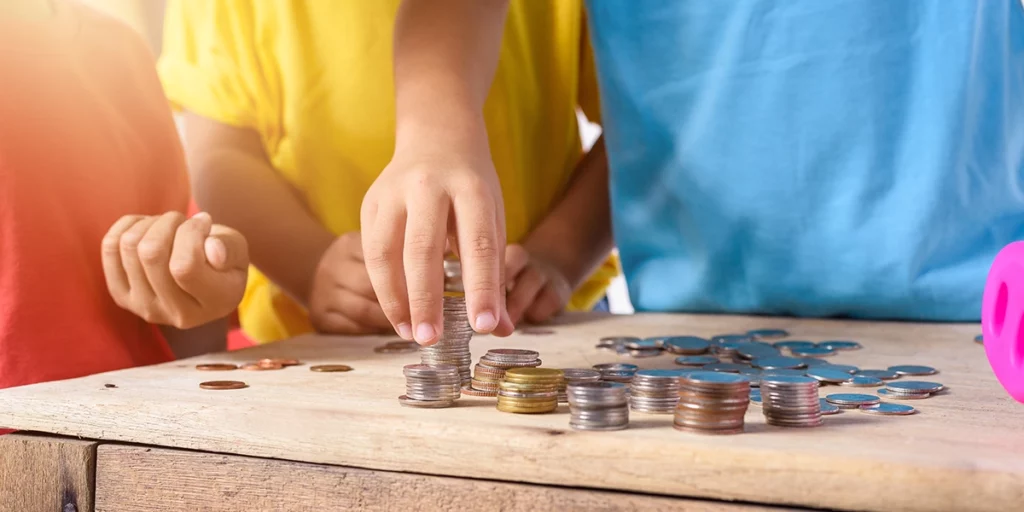Children need to learn the difference between right and wrong. But this process can have quite a learning curve. Many parents struggle to find balance when disciplining their kids. Some can go too easy on children and others can be too extreme. Furthermore, there has to be a distinction between discipline tactics for different ages. That’s why, in this article, we’ll cover age-appropriate punishments, while giving examples of discipline at home. Keep an eye out for the downloadable age-appropriate discipline chart toward the end of the article.
Download and Start Your Free Trial of the Safes Parental Control App
Disciplining Toddlers (Ages 1-3)
Toddlers are extremely difficult to comprehend since they don’t have any control over their impulses. For example, it’s difficult to explain death to a toddler, or any other serious subject for that matter. Also, their emotions are mostly on extreme levels, so they’re either very happy or very angry. You can rarely catch a toddler brooding. Toddlers are extremely curious, which according to Robert E. Larzelere and colleagues can predict future cognitive ability.
What Causes Trouble in Toddlers?
Toddlers can blow up instantaneously when they want something. Patience is not something you can expect from a toddler. They throw a tantrum to get something, whether it’s sleep, food, or a toy. Toddlers also act contrary to what you tell them most of the time. Just tell them to do something and see to what extremes they’ll go to just act contrary to what you want.
Tips on How to Discipline a Toddler
There are four main tips you can keep in mind when trying to discipline a toddler.
- Offer them a choice: Instead of telling your toddler to brush their teeth, ask them which toothpaste they want to use?
- Keep it simple: If you want to tell your toddler something is bad or good, tell them in the simplest way possible. Extra words, trying to explain the reasoning behind why something is bad confuses them.
- Be cool: Don’t stress when your toddler throws a tantrum. This can be particularly hard in public but if you keep your cool for long enough, your toddler will also cool down. This is because they’ll slowly but certainly understand that throwing a tantrum doesn’t get them the most important resource that they want: attention.
- Taking a time-out: Time-outs should only last for one minute per year of age, so your two-year-old should not get a time-out that lasts 5 minutes! In fact, 5 minutes is the maximum amount of time a time-out should last, even for an 8-year-old.

Disciplining Preschoolers (Ages 4-5)
Preschoolers are at that age where they’re mainly focused on learning social skills. They can understand your reasoning much better now and you don’t need to simplify every sentence for them to understand. In other words, they can follow your train of thought to a certain extent.
What Causes Trouble in Preschoolers?
Preschoolers evolve from throwing a tantrum (most of the time) into whining. When you think about it, they’re quite similar but whining has more communication involved and can easily become a habit. And even when they’re not whining, it’s hard to communicate with preschoolers because they’re not listening. Many might be watching TV and not hear what’s being said when you’re talking to them.
Tips on How to Discipline a Preschooler
Here are three tips on how to discipline a preschooler.
- Ask twice: If you ask something of your preschooler, like asking them to brush their teeth, and they don’t follow through, ask again. The second time should be accompanied by a warning, like telling them they won’t watch TV tomorrow. Do not ask again. The third time is simply applying the negative consequences. (Pro tip: Don’t make unrealistic warnings, like telling them they’ll never have ice-cream ever again.)
- Keep positive feedback in mind: It’s easy to just see the negative parts of your child’s behavior and try disciplining that. But you have to remind yourself to catch them doing good stuff and rewarding them. For example, if you don’t need to ask twice for them to come to dinner, they should get points.
- You can’t hear whining: If you hear whining in your preschooler’s voice, respond as naturally as you can. Eventually they’ll figure out that the extra energy they put in for whining doesn’t get an extra response from you.

Disciplining School Kids (Ages 6-9)
In this age range, kids are more capable of self-control and the disciplinary techniques that are used will affect their teenage years. Tactics that worked before don’t work now. For example, tactics such as picking a child up when they throw a tantrum in public don’t work for 8-year-olds.
What Causes Trouble in School Kids?
Though school kids are usually more patient than preschoolers, they still can’t understand long-term rewards properly. That’s why motivating them to do something such as school work needs a lot of recurring reminders. The good news is that they’re more likely to learn from past mistakes if you explain it to them.
Tips on How to Discipline a Preschooler
Here are a few tips on how to discipline a 6-year-old or older.
- Ask questions in retrospect: When your school kid has done something wrong, and they know it’s wrong, such as hitting another kid, ask questions. For example, you can ask them “What went wrong?” and “What they’ll do different in the future?”
- A second right fixes a first wrong: If your child does something wrong, don’t punish them instantly. Give them a second chance and if they prove themselves, reward that instead.
- Explain things causally: School kids can understand cause-and-effect to a certain degree. You should try your best to explain why something is good or bad when you can. For example, if you’ve enabled parental controls on Android, tell them about how much time they can spend on their phone and what will happen if they exceed the screen time limit.

Disciplining Tweens (10-13)
Tweens have better control over their impulses compared to school kids, yet they also try to act more independently from their parents. Tweens want and usually gain control over what they like bit by bit. This is the start of a power struggle which will peak in teenage years.
What Causes Trouble in Tweens?
Most of the issues that cause trouble with tweens are related to freedom. They will argue about how much time they can spend with their friends, if they can have their own mobile phone or not, etc. Also, tweens backtalk much more than other age groups. They will argue everything and anything to the point of absurdity, especially if it relates to how independent they are. What’s considered to be “cool” within their peer group also has an effect on them.
Tips on How to Discipline a Tween
Here are a few tips on how to discipline a tween.
- Negotiate and compromise: Avoid dictating rules to your tween. Instead, if they’re trying to change something in their favor, listen to them, and if possible, compromise. Negotiation, even if it ends up going your way, is important because your tween understand that you value their opinion.
- When + Then = Discipline: Try to establish natural cause and effect between what your child does and what happens. For example, when they finish their homework, then they get to play age-appropriate videogames.
- Set rules for talking: Tweens are more likely to backtalk. You should let your child know what type of talk is allowed and what isn’t. If they talk to you in a rude manner, insult you, or just don’t acknowledge you talking to them, call them out.

Disciplining Teenagers (14 – 18)
Teenagers are in the interval where they’re not children, meaning they can understand you like an adult would, and yet they don’t quite act as adults. Here, the main issue lies in hormonal changes. Teenagers are going through puberty and a lot of their behavior isn’t normal.
What Causes Trouble in Teenagers?
Teenagers are obsessed with making their own decisions. Usually, their decisions aren’t all that logical or reasonable. Most teenagers base their decisions on emotions, which isn’t quite helpful especially when many of these decisions are influential in their future.
Tips on How to Discipline a Teenager
Teenagers differ greatly, some rebellious teenagers may need different disciplinary tactics from calmer ones. Here are some tips on how to discipline a teenager.
- Keep the peace: Your teenager is out to get what they want and sometimes they may need your help even if they don’t know it. Try not to take the things they say or do personally and remember that they’re just a kid (avoid reminding them of that).
- Change the rules accordingly: As your teenager shows you how responsible they are, give them more freedom in the rules you set. This doesn’t mean you should just let go of rules. For example, there should still be a curfew in place, but maybe you can extend it an hour.
The Age-Appropriate Discipline Chart
How to discipline a 4-year-old and how to discipline a 6-year-old can be similar yet different in subtle ways. A good parent understands their child’s behavior and the kind of disciplinary tactic they’re most likely to respond to. Hopefully with the help of our age-appropriate discipline chart, you can decide on how to respond to your child with peace of mind.
The age-appropriate discipline chart we’ve prepared for you shows the most important discipline tips for each age group. To download the pdf file, click here.
Conclusion
An important part of keeping a child in check is using a parental control app. By downloading Safes’s iOS or Android version, you can get hold of a new tool which will help you implement the age-appropriate punishment you’ve chosen. If you want to know more about Safes’s features and pricing, feel free to try out the 14-day trial version, no credit card required.
Your Child’s Online Safety Starts Here
Every parent today needs a solution to manage screen time and keep their child safe online.
Without the right tools, digital risks and excessive screen time can impact children's well-being. Safes helps parents set healthy boundaries, monitor activity, and protect kids from online dangers—all with an easy-to-use app.
Take control of your child’s digital world. Learn more about Safes or download the app to start your free trial today!




